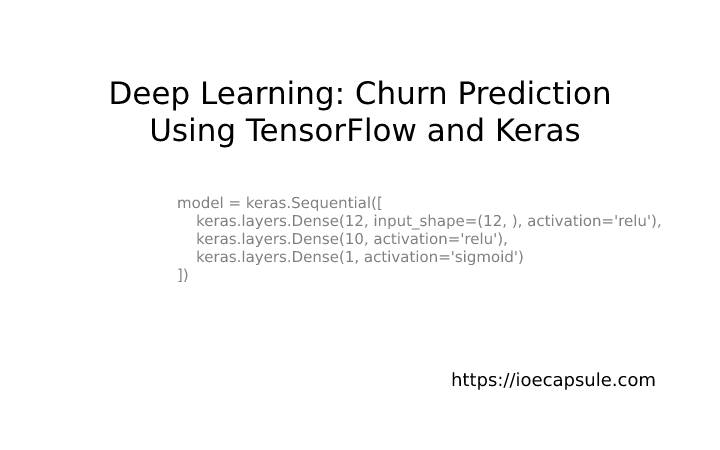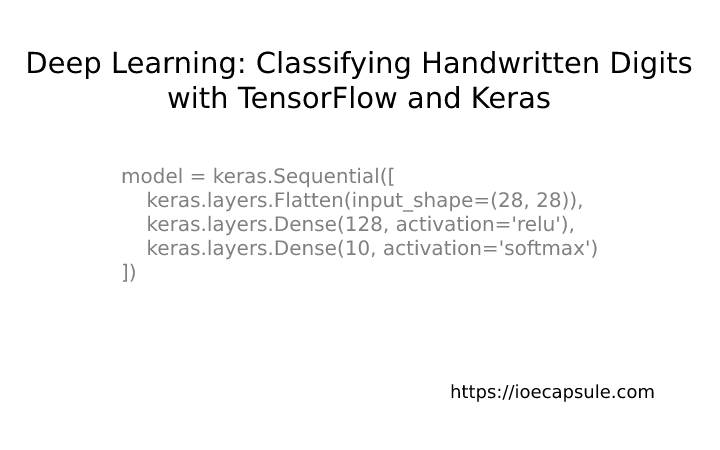Deep Learning: Churn Prediction Using TensorFlow and Keras
Churn prediction is the process of identifying customers who are likely to stop doing business with a company. This is a critical problem for businesses as it can have a significant impact on revenue and profitability. In recent years, machine learning techniques have been used to predict churn, and TensorFlow is one of the most popular machine learning libraries for this task. In this article, we will discuss how to use TensorFlow for churn prediction.
Data Preparation
Before we start building our model, we need to prepare the data. The data for churn prediction typically includes customer information such as demographics, purchase history, and usage behavior. We will need to perform some data cleaning and feature engineering to extract meaningful features from the raw data.
We will be using a bank churn dataset from Kaggle, which is free to download.
df = pd.read_csv("bank_churn.csv")
xs = df.drop(columns=['RowNumber', 'CustomerId', 'Surname', 'Exited'])
ys = df['Exited']Next, we will preprocess the data and split into training and validation sets. The training set will be used to train our model, and the validation set will be used to evaluate the performance of the model.
#handle categorical data
xs['Gender'].replace({'Male': 1, 'Female': 0}, inplace=True)
xs = pd.get_dummies(data=xs, columns=['Geography'])
#feature scaling
cols_to_scale = ['CreditScore', 'Age', 'Balance', 'EstimatedSalary']
scaler = MinMaxScaler()
xs[cols_to_scale] = scaler.fit_transform(xs[cols_to_scale])
x_train, x_test, y_train, y_test = train_test_split(xs, ys, test_size = 0.2, random_state = 0, stratify = ys)Building the Model
We will use a neural network to predict churn. Neural networks are a type of machine learning model that are particularly effective at learning complex patterns in data. TensorFlow provides a high-level API called Keras that makes it easy to build neural networks.
Our neural network will consist of several layers. The input layer will take in the features of each customer, and the output layer will predict whether the customer is likely to churn. We will also include one or more hidden layers between the input and output layers. These hidden layers will learn representations of the data that are more useful for predicting churn.
#create a model
model = keras.Sequential([
keras.layers.Dense(12, input_shape=(12, ), activation='relu'),
keras.layers.Dense(10, activation='relu'),
keras.layers.Dense(1, activation='sigmoid')
])Training the Model
Now that we have defined our neural network, we need to train it on our data. We will use a binary cross-entropy loss function, which is commonly used for binary classification tasks such as churn prediction.
model.compile(optimizer='adam', loss='binary_crossentropy', metrics=['accuracy'])
model.fit(x_train, y_train, epochs=100)In this example, we have used the Adam optimizer, which is a popular optimization algorithm for neural networks. We have also specified the binary cross-entropy loss function and accuracy as the evaluation metric.
We have trained the model for 100 epochs. You may also specify batch size. The batch size determines how many samples are processed at once before updating the weights of the neural network. A smaller batch size will result in a more stable training process, but it will take longer to converge.
Evaluating the Model
Once we have trained our model, we can evaluate its performance on the validation set. We can use the evaluate method in Keras to calculate the loss and accuracy on the validation set. We can also use predict method to make predictions and test with our test set.
prediction = model.predict(x_test)
y_pred = []
for i in prediction:
y_pred.append(1 if i > 0.5 else 0)












